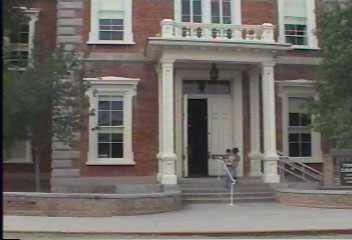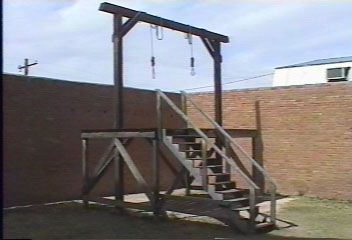Tombstone, Arizona
April 2000
But first, the mystery location on last week's web page
was the setting for the TV series High Chaparral
Here's a shot looking down the main street in Tombstone
Arizona. The horse drawn wagons still travel through town but they
only carry tourists and most of the parking spaces are taken up by cars.
Tombstone is located 50 miles southeast of Tucson.
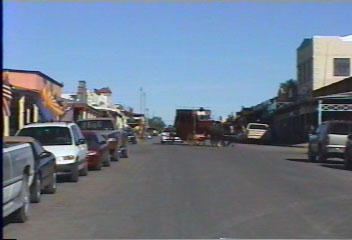 |
The town's boom period came in the 1880's and 1890's
during it's silver mining days. Like most mining towns we've visited,
Tombstone is very small. We walked down the sidewalks which are still wooden
planked and have retained their original squeaks, smelled the horse manure
in the streets and saw the bullet holes in the storefronts and walkway
overhangs. Unlike Old Tucson Studios, this is the real stuff of the
wild west. |
I think everyone has heard the story of the "shoot-out at
the OK Corral". We watched a reenactment of the shoot-out. The acting
wasn't as good as the shows at Old Tucson, but the buildings here
are mostly originals. The town's first newspaper, The Daily Epitaph,
is still in business and resides in it's original storefront location.
| After our visit we watch the 1950's movie version of
Tombstone, starring Burt Lancaster and Kirk Douglas and then the 1990's
version, starring Kurt Russell and Val Kilmer. The older version
had little to do with real events; the new one was more historically correct.
Both movies were shot in Old Tucson. (You can always tell an "Old
Tucson movie" by the mountain in the background or the presence of saguaro
cactus. (There are no saguaros at Tombstone or in Texas -- By the
way, saguaro is pronounced se-wh-are-o (short e, long o). |
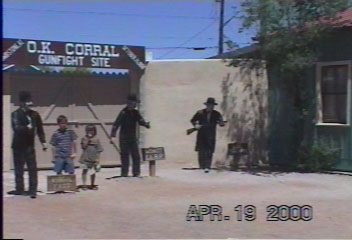 |
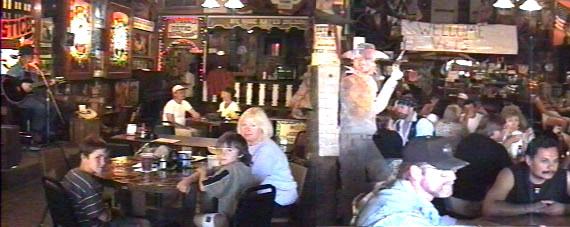
"Big-Nose Kate's". This is the famous saloon
that was owned by Kate, Doc Holiday's longtime girlfriend. I was
fascinated to sit here and think about what it would have been like in
here just 100 years ago. The "Welcome Vets" sign on the right was
welcoming the veterans to the traveling Vietnam Memorial Wall that was
in town this week.
Here's Tombstone's courthouse. This very handsome building
was built in the late 1800's. The boys earned another patch for their
Junior Ranger shirts as we explored the displays in this museum.
In addition to a very impressive classic style courtroom,
there were jail cells on the bottom floor. We learned that the hard-to-deal-with
prisoners were sent to the Yuma Territorial Prison. (Sure seems like we
hang out at some undesirable places).
The hardened killers and criminals, well . . . .
.
(yes, these original gallows are in the "backyard" of
the courthouse).
Saguaro National Park (the Eastern half)
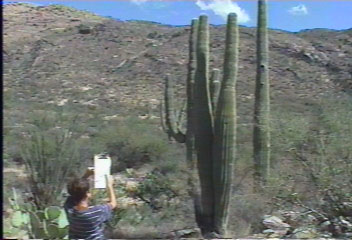 |
Another opportunity for Mitch and Max to earn a Junior
Ranger patch. We picked up a worksheet at the visitor center and
set out to discover the answers to it's questions and experience the features
of this national park.
Here, Mitch is using a 45 degree fold on his paper to
estimate the height of this cactus. A two foot saguaro would
be about twenty years old. Some live to be two hundred years old. |
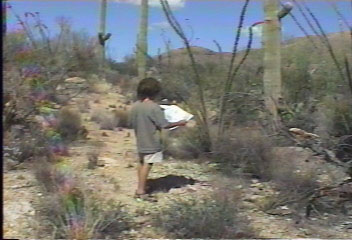 |
Max has picked a different cactus and is recording data
about the features of his cactus and the surrounding environment. |
| Each National Park designs their own Junior Ranger worksheet.
Some are extensive and take a couple of days to complete and others are
a double sided page and take only an hour or two. When parents work
with their kids on these programs, everybody learns a lot about the history
and natural science of the area -- except we all got tired of "Pinion Pines".
(By the time we left the Southwest, we knew everything you could know about
them. EVERY park had a learning exercise on Pinion Pines). |
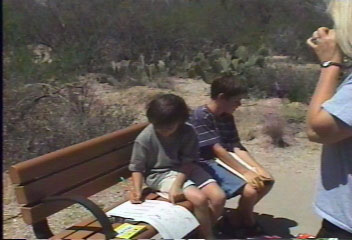 |
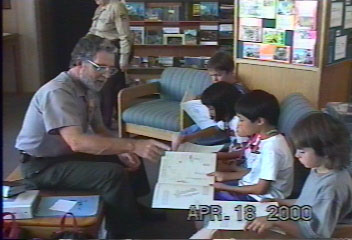 |
Here at the visitor center, the ranger does an extensive
review. He quizzed the kids to see if they learned or just hurried
though the worksheet.
Although this is the main part of the Saguaro National
Monument, (which is on the east side of Tucson), the west half has many
more saguaros. |
Mission San Xavier del Bac
the White Dove of the Desert
| In 1797 Spanish Franciscan friars competed this beautiful
mission. Our National Geographic travel guide describes it as "the paramount
expression of Spanish mission architecture in the United States".
We'd have to agree. |
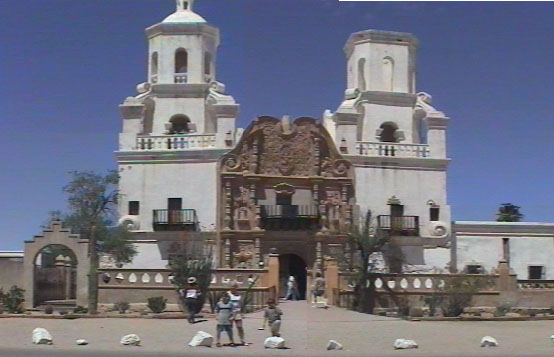 |
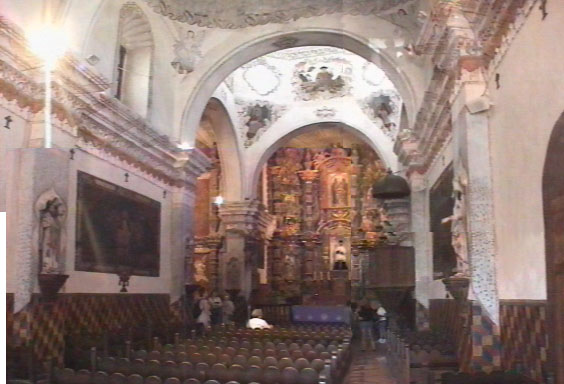 |
This mission is extremely well preserved. The interior
is outstanding.
It is still used for daily mass and serves the Tohono
O'odham Indians. |
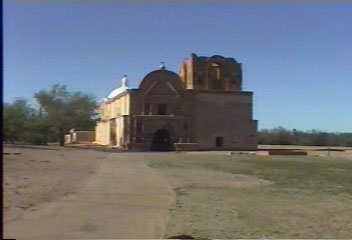 |
In comparison is the Mission San Jose' de Tumacacori,
about 40 miles south. This mission was completed in 1691 but was
abandoned in the mid-1800's due to raids by the Apache Indians.
This mission is a National Monument and has been partially
restored. It houses a museum of artifacts. |
ã
copyright Nodland 1999-2020




